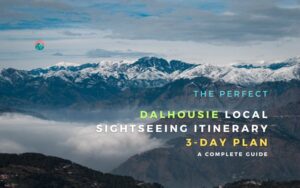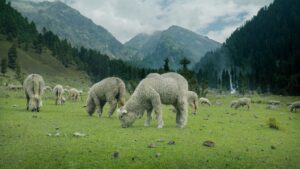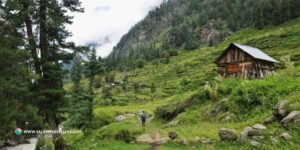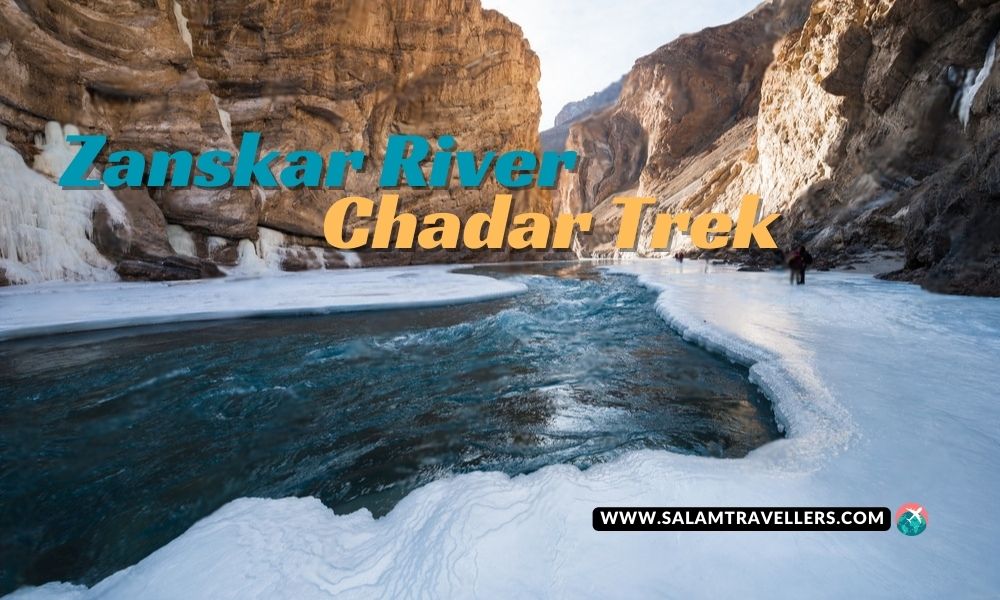
The Zanskar River Chadar Trek is an adventurous and thrilling winter trek that takes place in the Zanskar Valley of Ladakh, India. It involves trekking on the frozen Zanskar River ice sheet. Trekkers need to carefully walk over the slippery and unstable ice sheet, known as the “Chadar”, while marveling at the breathtaking frozen waterfalls and Grand Canyon-like valleys around them. The Zanskar River Chadar Trek gained popularity among adventure seekers in the late 1980s and continues to be an iconic Himalayan trek even today.
Also read: Top Trekking Destinations in India for Adventure Lovers
Which month is best for the Zanskar River Chadar Trek?
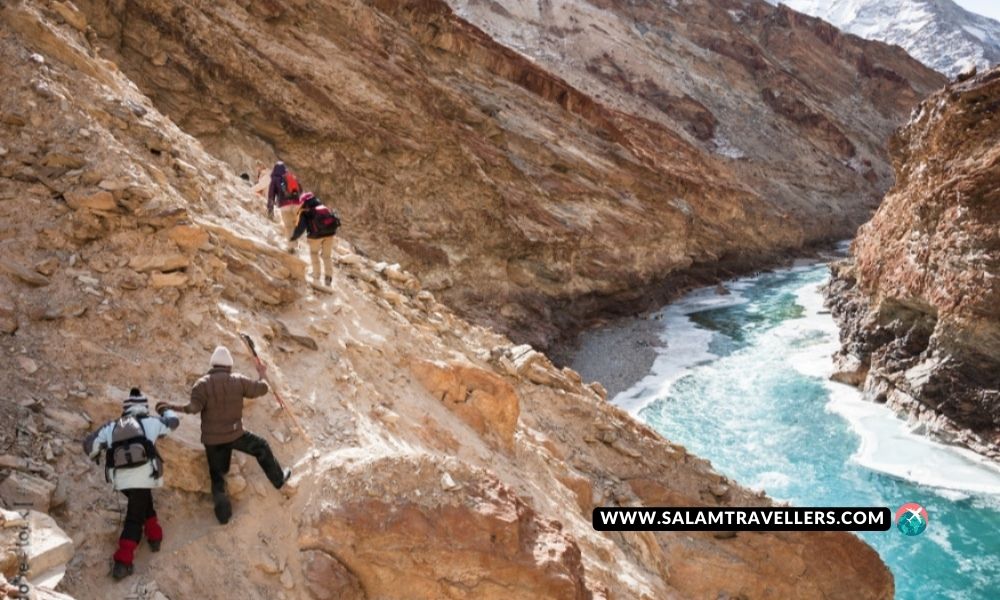
The Chadar Trek derives its name from the blanket-like sheet formed over the frozen Zanskar River. ‘Chadar’ literally means a blanket or a sheet in Hindi.
The Chadar Trek is open only during the winter months when the Zanskar River freezes over to form a sheet of ice called “Chadar”. The best time to do the Chadar Trek is mid-January to the end of February. During this time, the ice on the river is thick enough to walk on.
- January (mid-to-end): The ice is stable and thick enough for walking. Daytime temperatures are cold but bearable (-15 to -25 degrees Celsius during the day). Clear skies offer good views of the canyon walls.
- February: Excellent weather conditions. Days are sunny but very cold (-25 to -35 degrees Celsius). Ice is very thick and stable. Fewer crowds than in January. Clear visibility of the rock walls.
Avoid early January, as the ice may not form completely. March has increased the chances of the ice melting or cracking. The summer months of May and August have dangerous stream crossings due to melting snow. September – December should be avoided as the Chadar has not formed yet.
Also read: 8 Most Beautiful Trekking Places in Himachal Pradesh
Is Chadar Trek risky?
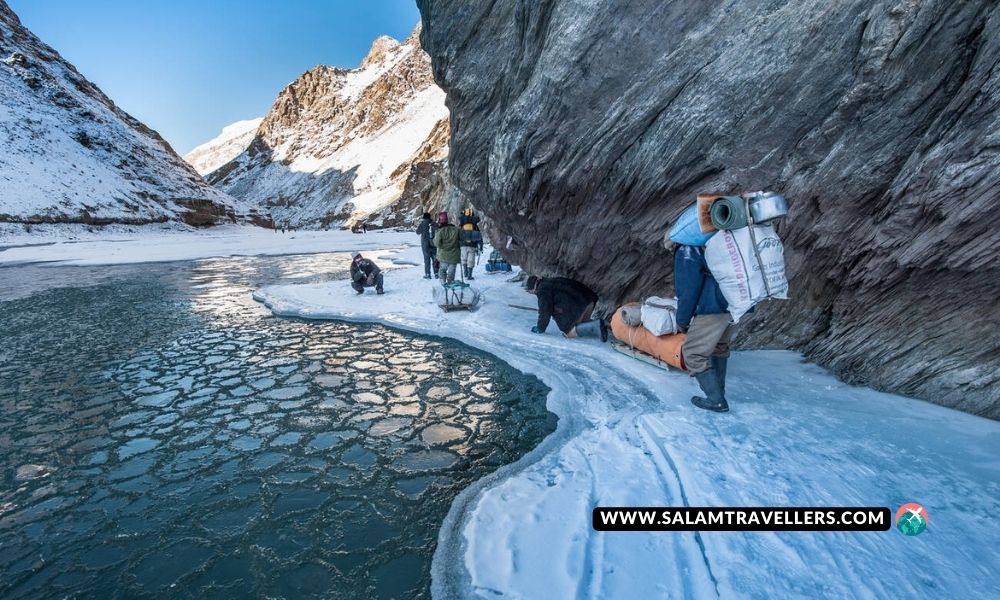
The Zanskar River Chadar Trek is considered to be a difficult trek and requires a good level of fitness and endurance. Here are some of the key challenges and fitness requirements:
- Cold Temperature: The temperatures during the Chadar trek can drop to -35 degrees Celsius during the night and early mornings. Trekkers have to brave the extreme cold for 6-7 hours daily while walking on the frozen Zanskar River. Proper layering of warm clothes is essential.
- Trekking on Ice: The frozen Chadar (ice sheet) can be slippery and wet in parts. Trekkers need to be extremely careful while walking, as there is a high risk of slipping and injuries. Wearing crampons is a must.
- Physical Fitness: The Chadar trek requires walking 15-17 km daily and carrying a backpack. The trek ascends and descends through high mountain passes. Trekkers should have good cardiorespiratory fitness and endurance. Prior high-altitude trekking experience is recommended.
- Medical Conditions: The cold temperature and high altitude can aggravate medical conditions like asthma, hypertension, arthritis, etc. People with such conditions should consult doctors before attempting the Zanskar River Chadar Trek. Carrying proper medication is important.
Also read: 10 Best Fort Treks in Maharashtra for 2024
How do I prepare for the Zanskar River Chadar Trek?
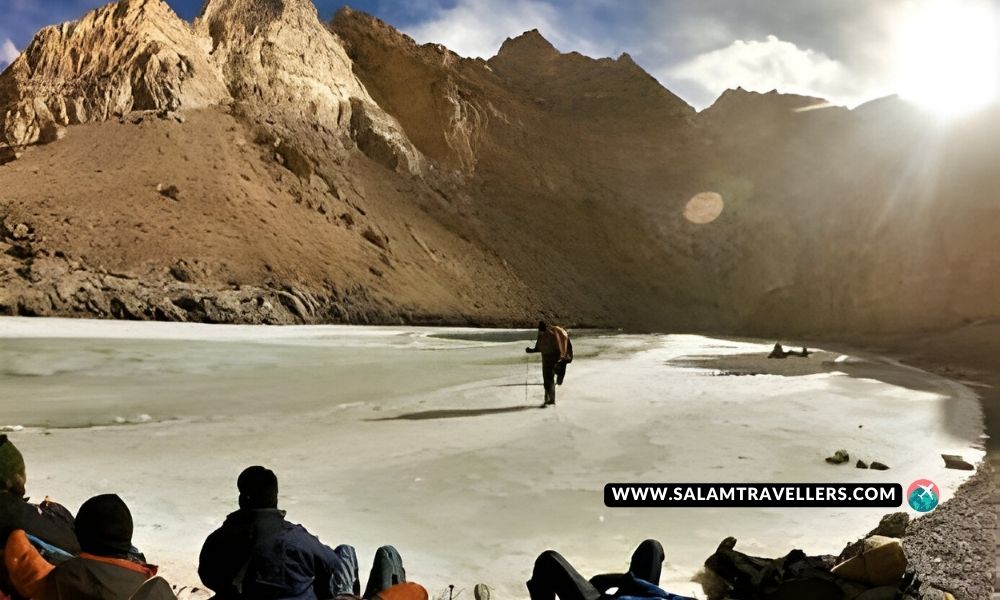
Proper preparation is key to having a safe and enjoyable trekking experience. Here are some tips on getting ready:
Fitness Training
- Start training at least 2-3 months in advance. Zanskar River Chadar Trek requires a high level of cardio fitness, as you will be walking on ice for 6-7 hours daily.
- Focus on building endurance through cardio exercises like running, swimming, cycling, and hiking. Aim for 45-60 mins of cardio 4-5 days a week.
- Strength training for the legs, core, and back is also important. Squats, lunges, and deadlifts will help a lot with the ascents and descents.
If you can, try to train with your backpack on to get used to the weight.
Packing List
- Sturdy and waterproof trekking shoes with good traction are essential for walking on ice. Trekking poles are highly recommended.
- Layer up with thermals, fleece jackets, down jackets, windproof or waterproof jackets, and pants. Multiple layers allow you to adjust.
- Woolen gloves, woolen caps, neck gaiters, and snow glasses are must-haves.
Other items: sturdy backpack, water bottles, headlamp, sunscreen, lip balm, medicines, etc.
Immunizations
- Get vaccinated for Hepatitis A and Typhoid at least one month before the trek.
- Carry medicines for altitude sickness, nausea, headaches, etc. Consult your doctor about any medication you need.
With the right preparation, you’ll be all set for the challenging yet incredible experience of walking on the frozen Zanskar River!
Also read: Top 10 Treks of Karnataka for Family
Zanskar River Chadar Trek Itinerary
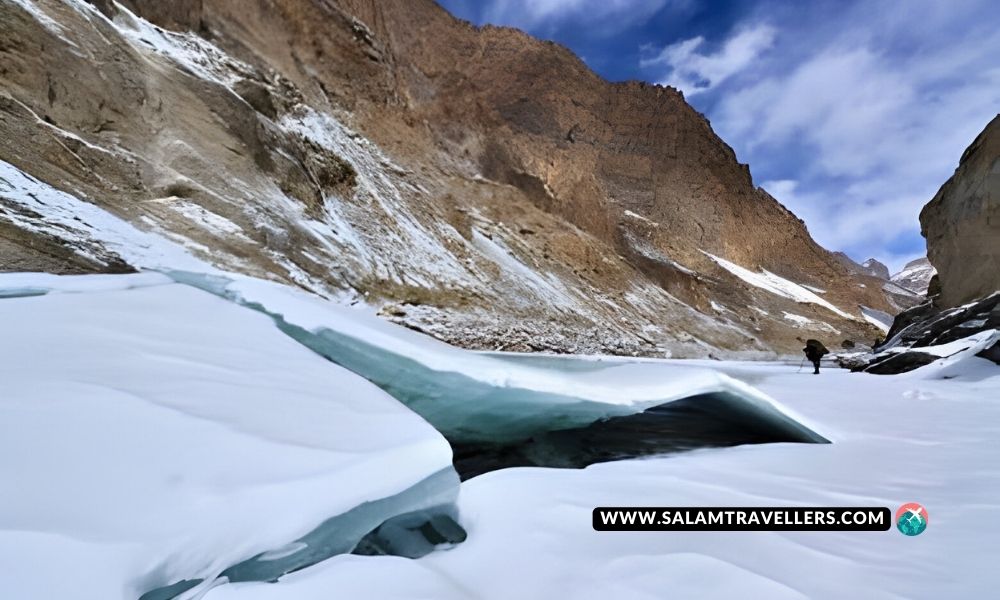
The Zanskar River Chadar Trek is usually completed over a period of 6-7 days. Here’s a day-wise itinerary with highlights:
Day 1 – Arrive in Leh to acclimatize
- Arrive in Leh and rest to acclimatize to the high altitude.
- Explore local markets and monasteries in Leh.
Day 2 – Drive to Chilling and trek to Tilad Do
- Drive from Leh to Chilling (about 1.5 hours).
- Begin the Chadar trek from Chilling to Tilad Do (about 6 hours).
- Witness the frozen Zanskar River and the sights along the banks.
- Camp overnight at Tilad Do.
Also read: Top 10 Things to Do in North Sikkim
Day 3 – Trek from Tilad Do to Gyalpo
- Continue trekking on the frozen Zanskar River from Tilad Do to Gyalpo (about 9 hours).
- Pass waterfalls and deep gorges on the trek.
- Set up camp at Gyalpo for an overnight stay.
Day 4 – Trek from Gyalpo to Tibb Cave
- Trek from Gyalpo to Tibb Cave (about 8 hours).
- Walk through sections with thick ice and some water pockets.
- Visit the famous Tibb Cave for an overnight stay.
Day 5 – Trek from Tibb Cave to Nerak Village
- Trek from Tibb Cave to Nerak Village (about 8 hours).
- Witness the confluence of the Zanskar and Shyok rivers at Nerak village.
- Interact with the locals and explore Nerak village.
- Stay overnight in tents or homestays at Nerak.
Day 6 – Return trek from Nerak Village to Leh
- Begin the return journey, retracing the route from Nerak to Leh (about 14 hours).
- Cover the distance in 1 long day of trekking or break the journey route.
- Witness the frozen landscapes again during the return.
- Reach Leh by evening and rest overnight.
Day 7 – Buffer Day
- Extra buffer day in case of any delays or cancellations earlier.
- Explore Leh, visit monasteries, and visit markets.
- Celebrate the completion of the Zanskar River Chadar trek.
The Chadar Trek takes you through the remote Zanskar Valley in winter, walking on the frozen Zanskar River. It offers stunning landscapes and frozen waterfalls along the trek route. With proper acclimatization and preparation, it is an adventurous and bucket-list trekking experience.
Also read: 8 Famous Treks in Maharashtra for Hiking This Summer
Zanskar River Chadar Trek Distance
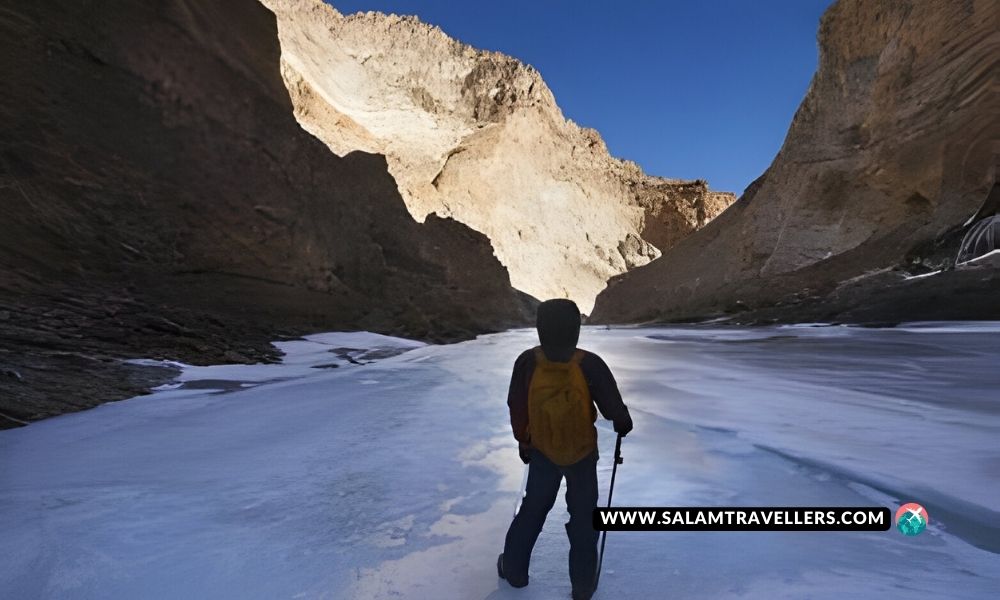
The total trekking distance for the Chadar Trek is around 75 km. The trek typically takes 6-7 days to complete.
Here is a breakdown of the everyday journey distance:
- Day 1 – Tilat Sumdo to Tilat Sumdo Camp – 12 km
- Day 2 – Tilat Sumdo Camp to Gyalpo – 11 km
- Day 3 – Gyalpo to Tibb Cave – 15 km
- Day 4 – Tibb Cave to Naerak Village via waterfall point – 12 km
- Day 5 – Naerak Village to Tibb Cave – 13 km
- Day 6 – Tibb Cave to Shingra Koma via Gyalpo – 12 km
- Day 7 – Shingra Koma to Tilat Sumdo – 12 km
The trekking is moderately difficult, with trekkers covering around 12-15 km daily on average. The frozen Zanskar River serves as the trail, and the distance can vary depending on the river conditions each year. Proper acclimatization to the high altitudes and harsh winter conditions is important when attempting the Zanskar River Chadar Trek.
Also read: Top 10 Treks of Uttarakhand for Summer of 2024
What is the cost of the Zanskar River Chadar Trek?
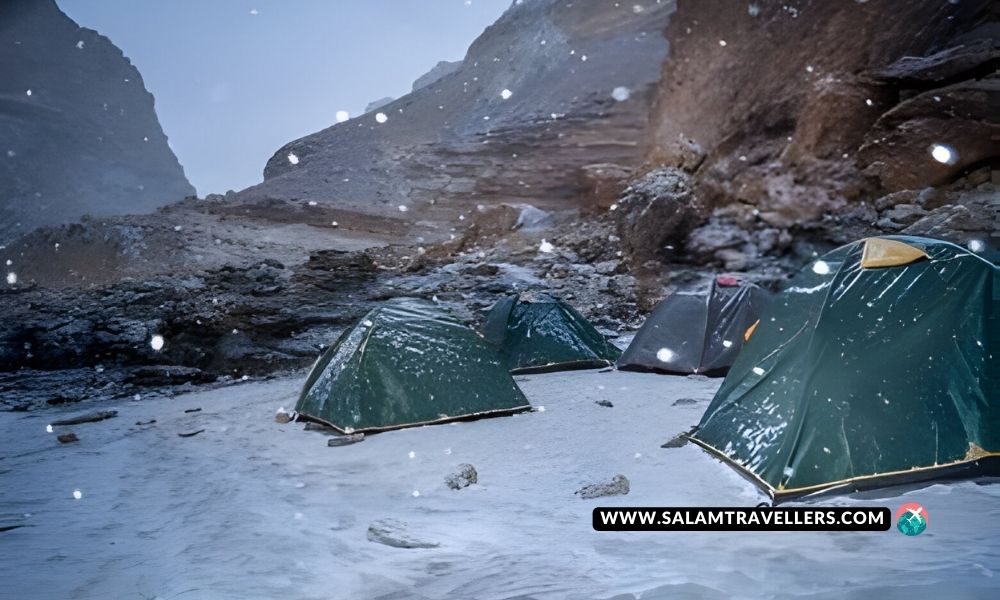
The total cost of the Zanskar River Chadar Trek 2024 ranges from INR 25,000 to INR 35,000 per person, depending on the tour operator and services included. Here is a breakdown of the primary expenses included:
- Trek Permit Fee: This is a mandatory fee charged by the tourism department. It costs around INR 700 per person.
- Guide Fee: Hiring an experienced and certified guide is highly recommended for the Chadar Trek. Guide fees range from INR 1500 to INR 2500 per day. For a 6-7 day trek, the total guide fee ranges from INR 10,000 to INR 15,000.
- Accommodation Cost: Accommodation is provided at homestays or campsites along the trek route. You can expect to pay around INR 1000 – INR 1500 per night for basic dorm room accommodation. For 6 nights, accommodation costs are around INR 6,000 to INR 9000.
- Meals: All meals are included during the trek days. Simple veg meals cost around INR 400 per person per day. For 6 days, the meal cost will be INR 2400 – INR 3000 per person.
- Porter charges: Hiring a porter to carry your backpack is optional but recommended. Porter fees are around INR 1500 – INR 2000 per day.
- Transport: Shared jeep transfers from Leh to the trek start point and back cost around INR 2000 – INR 3000 per person.
- Miscellaneous: Other costs like medical/safety equipment rental, bottled water, snacks, etc. can add another INR 2000 – INR 3000 per person.
So, in total, the cost of the Zanskar River Chadar Trek 2024 can range from INR 25,000 to INR 35,000 per person for a 6-night, 7 day trek. The cost varies based on the tour operator, group size, and services included.
Also read: Top 6 Adventurous Things to Do in East Sikkim
Is the Chadar Trek banned, and why?
The Zanskar River Chadar Trek, a popular Indian trail, is likely to be banned for a year or two due to overcrowding and the impact on the region’s ecology. The high number of hikers visiting the trail in winter has caused the river to melt faster than before, and the area is becoming chaotic. The trek is also used by locals in Zanskar Valley for livelihood, and the high number of hikers has led to commercialization and environmental issues. The ban is expected to improve the region’s beauty and ecology.
(Source: https://www.treksandtrails.org/blog/top-banned-treks-in-india-2020/)
Health and Safety Tips
The Zanskar River Chadar Trek takes place in a remote region at high altitude, so there are some important health and safety considerations.
Acute Mountain Sickness
Acute Mountain Sickness (AMS) is a risk on the Zanskar River Chadar Trek due to the high altitude. Symptoms can include headaches, nausea, fatigue, and trouble sleeping. To prevent AMS, ascend slowly, stay hydrated, avoid alcohol, and acclimatize by spending a night in Leh before beginning the trek. If symptoms develop, the only cure is to descend to a lower altitude.
Slipping Hazards
The frozen chadar can be extremely slippery. Wear crampons and trekking poles to stabilize yourself. Walk slowly and carefully, especially around curves and icefalls. Look ahead on the route for hazards. Falling into the icy river can be dangerous, so maintain three points of contact when possible.
Stay tuned for more adventure guides from Salam Travellers.

